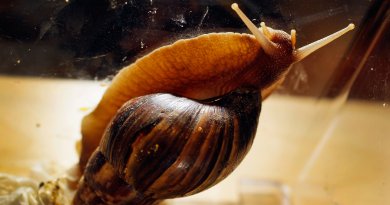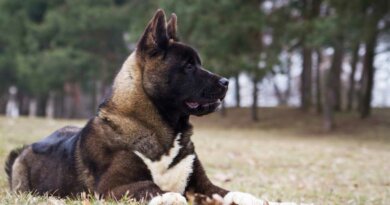Cane Corso Dog Breed Profile – Top Dog Tips
Suppose you’re looking for a large, loyal, hardworking dog breed. You’ve come to the right place.
In this blog, we’ll introduce you to one of the best working dog breeds out there—the Cane Corso.
The Cane Corso dog breed is an Italian dog that thrives in working tasks. These dogs are intelligent which makes them easy to train.
With their large physique and protective nature, these dogs are perfect if you want to adopt a guard dog.
The Cane Corso (pronounced as “KAH-Nay KOR-So”) is often described as affectionate, intelligent, and majestic by breed enthusiasts.
They are part of the mastiff breed and show a lot of their characteristics.
Below, we’ll discuss everything you’ll need to know about Cane Corso puppies.
So, if you’re planning to adopt one, you better scroll down!
Cane Corso History
But first, let’s tackle this breed’s history. Where did it come from? What was their main purpose for breeding?
Let’s start with their name, shall we? The name “cane” is from the Latin word for a dog which is “canis”.
On the other hand, the word “Corso” could come from two different meanings.
First is “cohors”, meaning bodyguard, and the other one would be from an Italian word called “corsus” which means sturdy or robust.
The Cane Corso originated in Italy. However, it is said that their history began way back in ancient Rome, as they were descendants of now-extinct Roman war dogs.
Moreover, the Cane Corso dog was bred to hunt game, guard property, and keep assistance on farms.
Also, their tasks include rounding up pigs or cattle and assisting to move them to market.
Over the years, this breed has declined from being farm dogs and it almost came near to extinction.
Fortunately, dog enthusiasts from the 1970s began to rebuild the dog breed.
In 1983, the Society Amatori Cane Corso was formed and the Cane Corso dog breed was officially recognized by the Federation Cynologique Internationale in 1996.
Later in the year 1988, Michael Sottile imported the first litter of Cane Corsos to the United States, and then a second litter was delivered in 1989.
In 1993, the International Cane Corso Association was created.
However, it was not until 2010 that the Cane Corso dog breed received its deserving recognition from the American Kennel Club.
If you want to know more about the breed or adopt a Cane Corso puppy, you can check out the Cane Corso Association of America.
Cane Corso Physical Characteristics
The Cane Corso is a working dog. And to do their work skillfully and efficiently, their body should be able to handle different kinds of tasks.
Height and Weight
That’s why their body is large-boned and muscular.
A male Corso stands about 25 to 27.5 inches above the shoulders while a female Corsos stands at 23.5 to 26 inches.
The Cane Corso’s weight is normally proportionate to its height and it usually ranges from 90 to 120 pounds.
Coat
The Cane Corso’s coat is short, stiff, and with a light undercoat. Their coat color varies from the color black, gray, red, or fawn.
If you’re not a fan of shedders, we don’t recommend getting this dog as they shed heavily twice a year.
But if you don’t mind the cleanup, the Cane Corso might be the perfect pup for you and your family.
The Temperament of a Cane Corso
Over the years, the Cane Corso has established a vigorous personality.
They are the type of dogs that are ready and focused no matter what the task may be.
However, training is extremely crucial. This dog breed is not recommended for weak leaders.
If a Cane Corso is led by a weak leader, it can become aggressive and be a danger not just to your family but also to the public.
If you’re the type of owner that provides great leadership and proper training, the Cane Corso can be a superb family dog that will be loyal and protective over you.
The ideal Cane Corso is loyal and very affectionate towards his owner and family.
However, to attain this kind of Corso, consistent training and early socialization are required.
Exercise and Training
Since the Cane Corso dogs are working dogs, they need a considerable amount of exercise and mental stimulation every day. They need lots of activity to keep them healthy and happy.
Always remember that a tired dog is a happy dog. Without exercise, they’ll have pent-up energy and can develop behavioral problems in the future.
If you don’t want your pup to have excessive barking, digging, and destructive behavior, you better train and exercise your pup regularly.
This dog breed requires at least 45 minutes to 1 hour of exercise per day. For instance, we recommend going on daily walks to also strengthen your bond.
However, the recommended quantity of exercise will differ on their age.
The needs of an adult Corso are different from a puppy Corso.
The wrong volume of activity can cause an injury to a puppy with growing bones and joints.
As they grow older, Cane Corsos will become less active and will have low energy levels.
But keep in mind that it’s still important to keep them reasonably active to avoid joint problems such as arthritis.
Since Cane Corsos are very smart dogs, it’s recommended to start positive reinforcement training at an early stage. You can start obedience training with recall.
A recall is where you call your pup and they’ll come towards you. This includes sit, stay, stop, and leave it.
Unfortunately, Cane Corso dogs can get easily bored. Keep training sessions short and fun and reward them with their favorite treats.
The Health of a Cane Corso
Cane Corsos are generally healthy dogs. However, just like any other dog breed, they are prone to certain health problems.
But don’t overthink since the list below doesn’t necessarily mean that they’ll get any of these diseases.
But it’s in your best interest to be aware of these health issues if you want to adopt this dog breed.
Hip Dysplasia
Since Cane Corsos are large dogs, they are the type of dogs that are prone to joint problems.
Below are some of the possible ailments that extra weight can cause.
Hip Dysplasia is a hereditary condition wherein the socket of the joint and ball becomes distorted.
When a dog is diagnosed with hip dysplasia, it’s crucial to keep its weight within the normal range and have them exercise with activities that encourage joint therapy.
Your vet will prescribe medications for anti-inflammatory or pain relievers and supplements.
Bloat / Gastric Intrusion
Bloat is a gastrointestinal condition where-in a dog’s stomach expands due to it teeming with fluid, food, or gas.
This can be a deadly issue if left untreated. In some cases due to bloating, blood is trapped in the stomach stopping return and proper flow.
Prevention includes avoiding your dog to do activities right after a meal, eating meals too fast, having large meals, and stressing them. Treatment will depend on your veterinarian’s observation.
Eyelid Entropion
This eye problem is the condition where the eyelid rolls inward, creating friction in the sensitive part of the cornea.
Generally, this condition needs surgery when it is quite damaging and may progress quicker than expected.
If you suspect that your pup is suffering from entropion, it is best advised to consult with your vet immediately for further examinations.
Grooming
Fortunately, if you’re not fond of freshening up dogs, Cane Corso is pretty low maintenance when it comes to grooming.
However, these dogs tend to drool more than other breeds. So if you’re not a fan of drool marking all over the house, keep this in mind.
It is best advised to have your Corso’s proper baths every 4-7 weeks.
It is also advised to brush your dog weekly to get rid of dead hair, especially during springtime.
Dog nails should be kept short. A good rule of thumb is their nails should not be touching the ground. Trim their nails every 2-3 weeks.
Ear cleaning is also crucial for the Corso as they are also prone to ear infections.
Use ear-cleaning liquid and a soft cloth or cotton balls to make this task easy and hassle-free.
Frequently Asked Questions about Cane Corso
Are Cane Corso good family dogs?
Yes, with proper training and socialization, Cane Corsos are great family members because of their protective nature.
However, this dog breed is most suitable for families with older children due to its large size and unique temperament.
Is a Cane Corso a pitbull breed?
At first, Cane Corsos might be confused as Pit Bulls. However, they are two very different breeds with different qualities and characteristics.
They may have a few similar physical features, but there are a lot of differences.
This includes their temperaments, training, exercise requirements, and their health.
How long can a Cane Corso be left alone?
Cane Corso can be left alone for about 4-8 hours during the day if they are given the right amount of exercise, training, and affection each day.
Just like any other dog, exercise is crucial. Lack of activities can cause unwanted physical or mental problems in the future.
Cane Corso Dog Breed: Summary
The Cane Corso, also known as the Italian Mastiff, is a working dog that loves to guard property and hunt game.
They are intelligent, loyal, and affectionate. These large dogs might be intimidating at first.
But with proper training and socialization, the Cane Corso will be a great addition to the family.
Keep in mind that the lack of training can cause destructive behavior in the future.
That’s why these dogs must have their required exercise and regular training.
If you’re looking for a new large-sized guardian dog, we recommend adopting a Cane Corso puppy.
However, this dog breed is best suited for family members that have experience with large dogs.
RELATED: MASTIFF DOG BREED PROFILE









